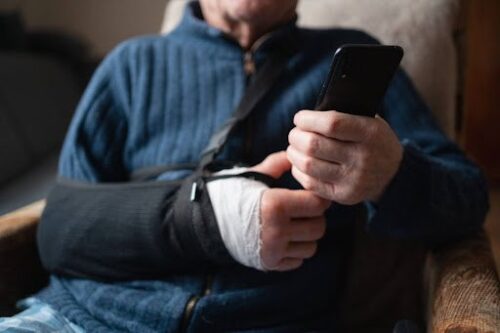
Short Answer:
In Alabama, pain and suffering compensation refers to the physical pain and emotional distress caused by an accident. Since these losses are not tied to direct bills, courts and insurance companies often use 2 common methods to calculate them: the multiplier method, which multiplies your economic damages by a factor based on severity, and the per diem method, which assigns a daily rate for each day of suffering.
Factors such as the permanence of your injury, its impact on daily life, and the duration of recovery all play a role. Working with experienced Alabama injury attorneys can help ensure your claim is valued fairly.
Key Takeaways
- An attorney can help maximize compensation and protect you from insurance company tactics.
- Pain and suffering covers physical pain, emotional distress, loss of enjoyment of life, and strain on relationships.
- The multiplier method and per diem method are the main ways compensation is calculated.
- Factors such as severity, permanence, recovery time, and psychological impact influence payout amounts.
- Strong evidence like medical records, photos, and testimony is needed to prove pain and suffering.
Table of Contents
- What Does Pain and Suffering Include?
- Calculating Pain and Suffering
- Factors That Affect Pain and Suffering Compensation
- Evidence Needed to Prove Pain and Suffering
- Exclusions from Pain and Suffering Compensation
- FAQs About Pain and Suffering in Alabama
- How To Maximize Your Pain and Suffering Compensation
- Those Thumbs Up Guys® Can Help!
What Does Pain and Suffering Include?
Pain and suffering in an Alabama personal injury case goes beyond the medical bills and lost wages you can easily calculate. It reflects the human impact of an accident and how it disrupts your daily life.
These damages may include:
- Physical pain: Chronic discomfort, lingering soreness, or long-term disability caused by the injury.
- Emotional distress: Anxiety, depression, fear, or post-traumatic stress linked to the accident.
- Loss of enjoyment of life: Being unable to participate in hobbies, activities, or routines you once enjoyed.
- Impact on relationships: Strain on family life, friendships, or intimacy due to the injury and recovery process.
By accounting for these elements, pain and suffering damages recognize the hidden but very real toll that an accident takes on a person’s well-being.
Calculating Pain and Suffering
2 primary methods are used when determining the amount of pain and suffering compensation one will receive:
Per Diem Method
In the per diem method, a daily rate is assigned to your pain and suffering, and that amount is multiplied by the number of days you’ve suffered since the accident.
Multiplier Method
The multiplier method is more commonly used. Here, your total economic damages (such as medical expenses and lost wages) are multiplied by a factor between 1.5 and 5, depending on the severity of your suffering.
Factors That Affect Pain and Suffering Compensation
The amount of compensation for pain and suffering in Alabama depends on several key factors. Courts and insurance companies look at the details of your injury and how it continues to affect your life.
The more severe and long-lasting the injury, the higher the potential value of pain and suffering damages. Permanent disabilities, scarring, or chronic pain typically result in greater compensation.
If your injury prevents you from enjoying activities, working in your chosen career, or maintaining independence, this loss weighs heavily in calculating damages.
The length of your recovery matters. Short-term injuries may bring some compensation, but long recovery periods with extensive medical treatment often lead to higher awards.
Mental health struggles such as anxiety, depression, or post-traumatic stress disorder after an accident are taken into account. These issues can be just as disruptive as physical injuries and significantly influence compensation.
Together, these factors highlight how personal each case is—meaning 2 people with similar injuries might receive different settlements depending on how their lives are affected.
Evidence Needed to Prove Pain and Suffering
Because pain and suffering are not tied to direct bills, strong evidence is necessary to show how the injury has affected your life. The more documentation you have, the stronger your case will be.
Evidence includes:
- Medical records: Detailed doctor reports, hospital visits, treatment plans, and prescriptions provide proof of the physical impact of your injuries.
- Photos of injuries: Pictures taken at the time of the accident and throughout recovery can visually demonstrate the severity and duration of your suffering.
- Testimony from you and loved ones: Statements about how your injury has changed your daily routine, hobbies, and relationships help illustrate the emotional and personal toll.
- Pain journal: Keeping a daily record of your pain levels, symptoms, and how the injury limits your activities can provide powerful evidence of ongoing suffering.
When presented together, these forms of evidence give a fuller picture of your experience, making it easier for insurance companies or a jury to understand the extent of your suffering.
Example Pain Journal Entry
Date: March 10, 2025
- Pain Level: 8/10
- Symptoms: Severe back pain, numbness in left leg, difficulty sitting for more than 30 minutes.
- Impact: Missed work shift due to pain; unable to play with children after school; required help from spouse to get dressed in the morning.
- Notes: Medication reduced pain slightly but caused drowsiness.
Exclusions from Pain and Suffering Compensation
While pain and suffering damages are often available in Alabama personal injury cases, there are situations where they may not apply.
- Workers’ compensation claims: Employees injured on the job are generally limited to medical benefits and lost wages under Alabama’s workers’ compensation system. Pain and suffering is not included in these claims.
- Wrongful death cases: Alabama is unique in only allowing punitive damages in wrongful death claims. Families cannot recover compensatory damages such as pain and suffering for the victim.
- Minor or temporary injuries: In cases where injuries heal quickly and have little long-term impact, courts and insurers may limit or deny pain and suffering damages.
Because these exclusions can significantly affect the outcome of a claim, it’s important to understand whether your case qualifies for pain and suffering compensation. An experienced attorney can review your situation and explain your options.
FAQs About Pain and Suffering in Alabama
There is no single formula, but 2 common approaches are used:
- Multiplier method: Economic damages like medical bills and lost wages are multiplied by a factor (usually 1.5 to 5) based on the severity of the injury.
- Per diem method: A daily dollar value is assigned to your suffering and multiplied by the number of days you’ve endured pain since the accident.
Yes, you can pursue pain and suffering in most personal injury cases. However, there are exceptions:
- Wrongful death cases: Only punitive damages are available, not pain and suffering.
- Workers’ compensation claims: Benefits are limited to medical costs and lost wages; pain and suffering is excluded.
There is no true “average” amount because every case is unique. The payout depends on the seriousness of the injury, the length of recovery, and how your life has been affected. Minor injuries may result in smaller settlements, while severe, permanent injuries can lead to significant compensation.
How To Maximize Your Pain and Suffering Compensation
If you’ve been injured, there are specific steps you can take to strengthen your case and increase the likelihood of receiving fair pain and suffering compensation.
Hire an attorney early: Working with an experienced injury lawyer ensures you have someone protecting your rights from the start. Our attorneys know how insurers evaluate claims and can push back against low settlement offers.
Document everything: Keep a detailed record of your medical care, including doctor visits, hospital stays, prescriptions, and therapy. Save receipts, take photos of your injuries, and maintain a pain journal to show how your daily life has been affected.
Follow your treatment plan: Insurance companies may argue that your pain is exaggerated if you skip appointments or ignore medical advice. Consistently following your doctor’s instructions strengthens your claim.
Avoid common insurance adjuster traps: Don’t agree to give a recorded statement, don’t speculate about your recovery, and don’t accept the first settlement offer. Always let your lawyer handle communications with the adjuster.
Gather supporting testimony: Statements from family, friends, or coworkers about how your injury has changed your life can provide powerful evidence of your suffering.
By following these steps, you create a strong foundation for your case and improve your chances of receiving the compensation you may deserve for both the physical and emotional toll of your injury.
Those Thumbs Up Guys® Can Help!
If you’re struggling with the physical and emotional toll of an accident, you don’t have to face the insurance companies alone. At Floyd Hunter Injury Law, our team is dedicated to standing up for people across Alabama and making sure they receive the compensation they may deserve.
We know how to calculate the true value of pain and suffering, gather the evidence needed to prove your case, and fight back against adjuster tactics designed to reduce your payout.
With Those Thumbs Up Guys® on your side, you can focus on healing while we handle the legal battle. Reach out today for your 100% free case review and find out how we can help you move forward with confidence.




